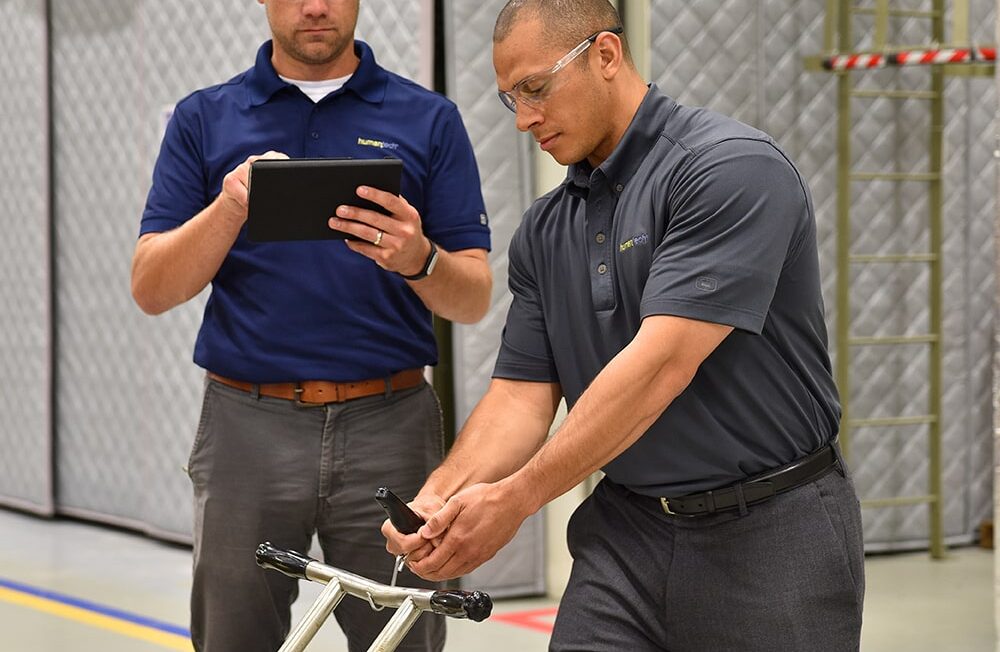In our recent webinar, “Quantifying Forceful Exertions in Ergonomics,” one of our resident experts, Certified Professional Ergonomist and Principal Solutions Strategist, Rick Barker, broke down the formulas and equations that can help determine the amount of force in a movement. Force is a primary risk factor for musculoskeletal disorders in the workplace and is a key element of most ergonomics assessments. Unfortunately, it’s difficult to collect and measure force data, and therefore assessment scores are often inaccurate and unreliable. In this detailed session, Barker explained a variety of ways to collect force data, with direct measurements, observer estimations and wearable sensors, and the benefits, limitations, and common mistakes made using each method. Without giving away the whole webinar (because you should go watch it!), here are some key points on measuring force from the session. Direct Measurement: The preferred method for gauging force, when feasible, with tools like tension meters (push/pull gauges), scales and force-sensing gloves to maximize accuracy while mimicking the actual motions of the task. This method is only accurate for linear forces, and compounding forces with this method is difficult. It’s important to complete multiple trials with this method and average the data to find the real amount of force. Converting Torque Specifications: Method of calculating force with an equation, Torque (T) = F (Force) x d (Length). This equation is useful for assembly but not teardown tasks. With this method, it’s important to match measurement values (inch-pounds of force with length in inches of tool handle) for accurate data. Simulation: Method of gauging force by simulating the task, used when direct measurements can’t be taken. Simulation isn’t as accurate as the two methods above, but it can minimize delay between applying force and simulating force in a task, and it matches the simulation conditions to the actual conditions. Grip forces are the most commonly simulated force measurement. Estimation: This method uses a set scale for workers to rate the amount of force used in a task (like the pain scale used in medicine). It’s viable and accurate if done systematically with a validated approach, like the Borg CR10 Scale. With this method, it’s always best to defer to the force rating that the operator gives the task, as they’re the ones doing it. Estimation is good to use when force gauges aren’t available or there’s a risk of disrupting the general workflow or equipment. Additionally, Barker demonstrated how to use single-task and multi-task evaluation methods to quantify the impact of a force, and he provided an overview of ways to quantify the impact of grip forces, arm exertions, and material handling. Watch the session and get all the details here!
“Quantifying Forceful Exertions in Ergonomics” Webinar Summary
Posted on February 4, 2022 | in Ergonomics
